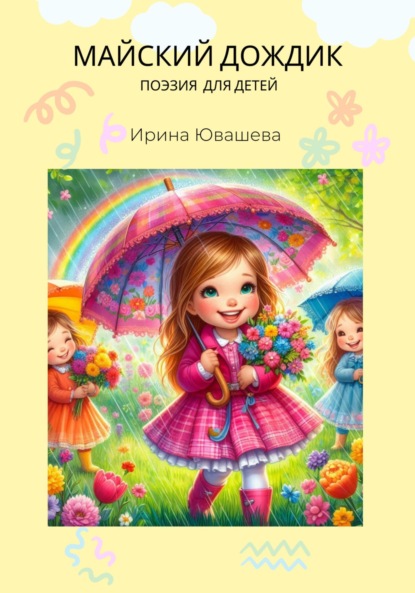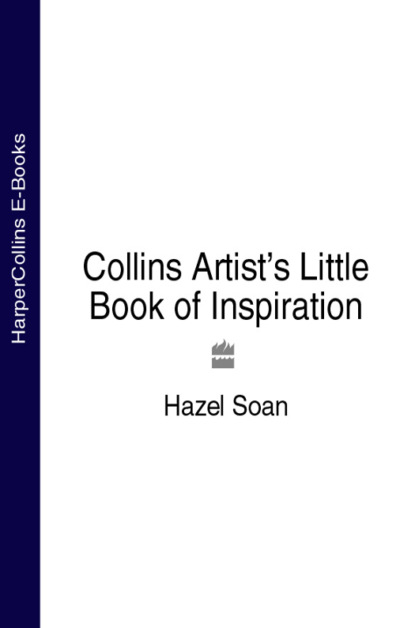По всем вопросам обращайтесь на: info@litportal.ru
(©) 2003-2024.
✖
Collins Artist’s Little Book of Inspiration
Автор
Год написания книги
2019
Настройки чтения
Размер шрифта
Высота строк
Поля
Learning to see, learning to feel
‘… the artist has only to trust his eyes.’
Rodin
Most people probably accept there is nothing the artist cannot paint, but, even knowing this, still find it difficult to pick out from the view in front of them the inspiration for a good painting. They may go in search of a subject but find it wanting in some way, or compose their picture without real conviction because they are unsure of its worthiness as a subject for a painting.
In practice there are times when the desire to paint is strong, but it is difficult to find a satisfactory grouping of objects or a perfectly composed view to act as the catalyst to get started. What is it that actually kindles a painter’s interest?
Painting starts with seeing. We are easily attracted to pleasant groupings of objects: a setting in the landscape, the colours of flowers, a charming child or an interesting face. We are often struck by the effects of light and shadows.
The less tangible, such as atmosphere, mood, or an unusual incident, also engages the eye, while pattern, repetition and contrasts have strong visual appeal. Familiarity with the subject, a face we love, a memorable room, or food, can also stir us to reach for the paintbrushes.
Finding inspiration
Sometimes, however, inspiration is not forthcoming. Then, instead of looking at the subject itself, you will need to look for the two-dimensional qualities sought by the picture plane: the nuances of light, line, shape, colour and incident.
The aim of this book is to show you the elements that make up paintings, so that you can see them all around you and find a never-ending supply of subjects – in effect, to create your own inspiration.
Through an artist’s eyes
Painters lay colours, lines and shapes upon a flat surface and these are transformed into landscapes, people, objects and feelings. If you can view the world through eyes that fluently translate three dimensions into two dimensions you will be overwhelmed with painting ideas.
Painting starts with the eyes. There is a threefold pleasure and purpose in painting – the act of looking, the making of the painting, and the response to the outcome by others – but it all starts with seeing. Training the eye to see is the first step to a successful painting.
Thinking two-dimensionally
The things that make interesting paintings may not be subjects that attract the eye per se, but groups of elements that form a particular set of shapes, colours or tones that the artist recognizes will make a successful composition or colour scheme upon the flat picture surface.
The Studio Chair 122 x 91 cm (48 x 36 in), oil on canvas This painting is composed around the shapes of the spaces between the wooden rungs of the chair. To make it easier to draw shapes in proportion use the length of an outstretched pencil to compare the widths of the space-shapes with their heights.
Getting in shape
The simplest way to train the eye is to look at shapes and outlines. On the flat surface of a painting it is easy to understand that the shapes of spaces between parts are going to be as important as the shapes of objects themselves. The proportion of those space-shapes is also crucial to determine their outlines.
Look at the spaces under chairs and tables, the gap between an arm and the trunk of the body, the space inside the handle of a jug, or the spaces under tree canopies.
Digging for Treasure (detail) 76 x 65 cm (30 x 22 in), oil on canvas The overall shape of the silhouetted group is as important as the shape of each figure and the spaces between them.
Long Shadows in Parsons Green 71 x 46 cm (28 x 18 in), watercolour, gouache and conté crayon on paper Once you start to see in shapes, drawing becomes much easier. Perspective falls into place because the lines are found from the angled sides of the shapes they bound. Use the length of the pencil to find relative proportion between near and far objects.
The shape of things
Now start observing the shapes of the items themselves. See their height and width, their overall proportion, not the surface features.
Try to outline the correct shapes, or block them in with flat brushstrokes from the inside out. Alternatively, create their shapes by painting only the shapes that surround them.
Next look at group shapes – a cluster of trees, or perhaps a knot of people. Do not limit your eye to individual items; look for shapes of the same tone or colour. For example, there may be a dark shape under the eaves of a house that includes a door, a window, a shadow and half of a bush, or the skirt of a seated woman may merge with the chair and both may merge into the shadow on the wall. For the artist these united shapes become one item on the flat picture plane.
‘La Cuenta, Por Favor’ 20 x 20 cm (8 x 8 in), watercolour Idling over a cup of coffee on holiday I noticed how interesting the money looked upon the plate – a tiny fragment from amongst the whole scene of the marina, but it provided a delightful subject for a 30-minute sketch.
Assume nothing
A bobbing head is the mark of an observant eye. Constantly refer to the source of your visual information. Never presume you know what anything looks like, no matter how familiar – on few occasions will the light falling on your subject be repeated in exactly the same way. Observe it as you have never seen it before and that freshness of vision will translate into your paintings.
Simplification
When you look at the world you do not notice or see every detail. You pick out that which interests you and catches your eye. A camera cannot be selective about what it sees, but the artist can be. It is this very selection of what really matters to you that makes a painting original.
If the shape of a group of objects has attracted you – a huddle of buildings on a skyline, perhaps – it is this that becomes your subject. If you forget this and get carried away with putting too much detail in the brickwork, for example, you run the risk of losing the essence of your painting. The more you can synthesize the particular elements that interest you the stronger your painting is likely to be.
Day by Day 20 x 28 cm (8 x 11 in), oil on canvas In reality this particular stretch of beach on Lake Malawi was more cluttered. I simplified the scene to impart the spirit of the task I had watched performed day by day along the lake.
Homing in
When observing the view let the eye roam back and forth, left and right to find scenes within scenes within scenes. Clarification may involve homing in on tiny features, and sometimes your subject is a fragment of the whole.
Everglades 38 x 56 cm (15 x 22 in), watercolour It is the artist’s prerogative to pick and choose from any subject whatever inspires them. Other things were happening in this view, but I included only the elements I wanted to paint. The resulting image has a stronger impact, and makes it clearer to ‘read’.
Fragments of the whole
A tuft of grass on a dune can say as much about a beach as a painting of the entire shore; a pair of shoes may hint more at a person’s character than a full-length portrait; and a corner of a table in an interior may be more interesting as an image than a picture of the whole room.
Distilling the subject
Sometimes the desired subject seems just too daunting to tackle. It may be a vast panorama, a busy street scene, a complicated building or a detailed fabric. To resolve this, stand back, half close your eyes and look for the most obvious lights and darks, and the main lines and shapes. Concentrate on portraying these; you will find that simplification will strengthen the painting, not weaken it.
In the course of painting you may get carried away with details and forget to see the image as a whole. Holding on to your subject can sometimes be as hard as finding the right subject in the first place! Be single minded and purposeful. Ask yourself, ‘What did I first notice when I was drawn to this scene?’, ‘What makes it exciting?’. Keep this initial inspiration in mind to prevent yourself from overworking the painting and losing your way.
Getting involved
We all have different passions and emotions. Do not be afraid to record visually the objects and incidents that provoke your interest. The seemingly obscure statements made by small details may be far more meaningful in the end than a fully composed view.
Through painting you become acquainted with your subject. After you have finished painting a landscape or interior, walk into it and enjoy the familiarity of it. Touch the tree you have lovingly painted for the last hour, handle the objects on which you bestowed your time. This intimacy is an added bonus that many painters forget to enjoy as they pack up their paints and walk away.
PROJECT
Training the eye
Training the eye to see does not happen overnight. Practise by observing and drawing shapes and distilling the elements of a subject to its essentials, using any medium you wish. Do not judge yourself on results – remember you are learning to see, not making paintings.
MATERIALS USED
acrylic
charcoal
watercolour





